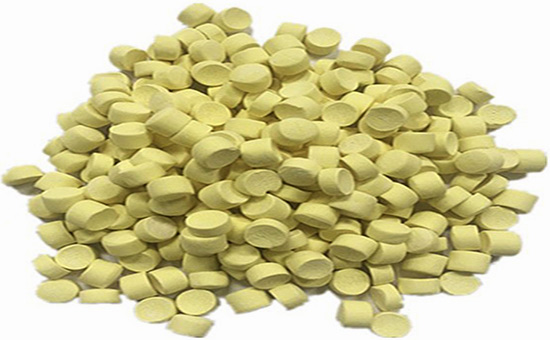Latex recycled rubber is processed from waste natural rubber, waste latex and its products as raw materials, retains the basic performance characteristics of natural rubber, good elasticity, high strength, can be used alone or in combination with natural rubber to produce highly elastic rubber products, effectively reducing raw material costs. The use of latex recycled rubber to produce highly elastic rubber products, the vulcanization system design directly affects the elasticity of vulcanized rubber.
1. Cross-linking density affects the elasticity of latex recycled rubber vulcanized rubber
In actual production, with the increase of the cross-linking density of latex recycled rubber, the elasticity of vulcanized rubber showed a trend of increasing first and then decreasing. Moderate crosslinking can reduce or eliminate the slippage among molecular chains, which is conducive to improving the E5LYY325 elasticity. Excessive cross-linking will hinder the activity of molecular chains and reduce elasticity. Therefore, when designing a vulcanization system for high-elasticity latex recycled adhesives, the degree of vulcanization can be improved by appropriately increasing the amount of vulcanizing agents and accelerators, and then improving the elasticity of vulcanized rubbers of recycled rubbers.

The tensile strength and rebound value of vulcanized rubber using ordinary vulcanization system latex recycled rubber are better. Sometimes the phenomenon that does not match the law is mainly due to the different cross-linking density of vulcanized rubber. The cross-linking density of the four vulcanization systems vulcanized rubber is arranged as semi-effective vulcanization system, ordinary vulcanization system, effective vulcanization system, and balanced vulcanization system. The crosslinking agent Si-69 was added to the semi-effective vulcanization system, and the crosslinking density increased and the elasticity of vulcanized rubber increased.
2. The type of cross-linking bond affects the elasticity of latex regeneration rubber vulcanized rubber
When using latex recycled rubber to produce highly elastic rubber products, the type of cross-linked bond directly affects the elasticity of vulcanized rubber: the polysulfide bond energy is smaller, the motion binding force on the molecular chain segment is smaller, and the relaxation is fast, and the elasticity of latex recycled rubber vulcanized rubber is high. Generally, thiazoles or hyposulfonamides are selected as the main accelerator, and guanidine is used as the second accelerator, which has high resilience, good physical and mechanical properties of vulcanized rubber, and small hysteresis loss.

The latex regeneration glue vulcanization system uses high sulfur with low potency accelerators such as aldehyde amine AA and 808, which can reduce the hysteresis ring area, increase elastic energy storage, and have high resilience while reducing the upward upturn of the stress-strain curve. The vulcanized rubber with semi-effective vulcanization system is the most elastic, followed by the vulcanized rubber of ordinary vulcanization system, vulcanized rubber of effective vulcanization system, and vulcanized rubber of balanced vulcanization system.

To improve the elasticity of latex recycled rubber products, rubber product manufacturers can also choose latex recycled rubber with high glue content, or use it with natural rubber and butadiene rubber with good elasticity to reduce the amount of active fillers, choose carbon black with large particles and low structure, and choose a softening plasticizer with good compatibility with rubber and reduce the amount as much as possible. Other specific methods to improve the elasticity of latex recycled rubber will be further discussed in the future.
Exclusive original article [commercial authorization] reprint, excerpt and excerpt in any form are prohibited without written authorization. Focus on Hongyun rubber: learn the process formula and raw material technology of producing rubber products from recycled rubber to help you reduce costs and increase profits